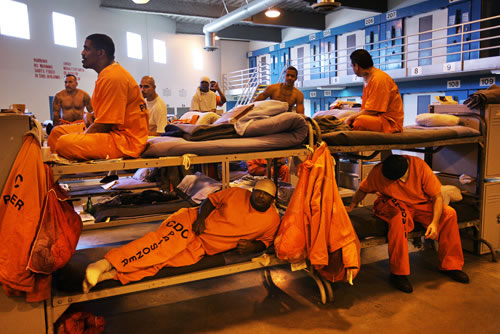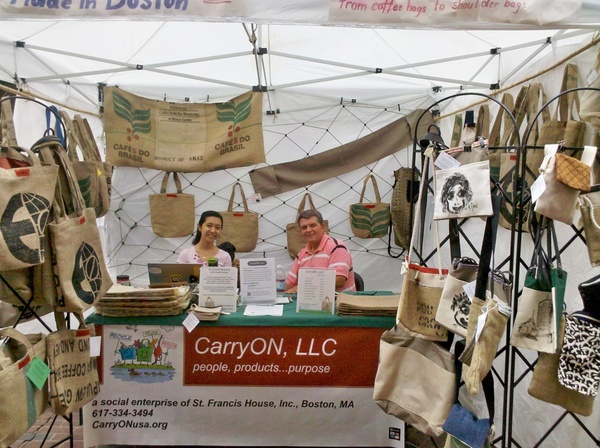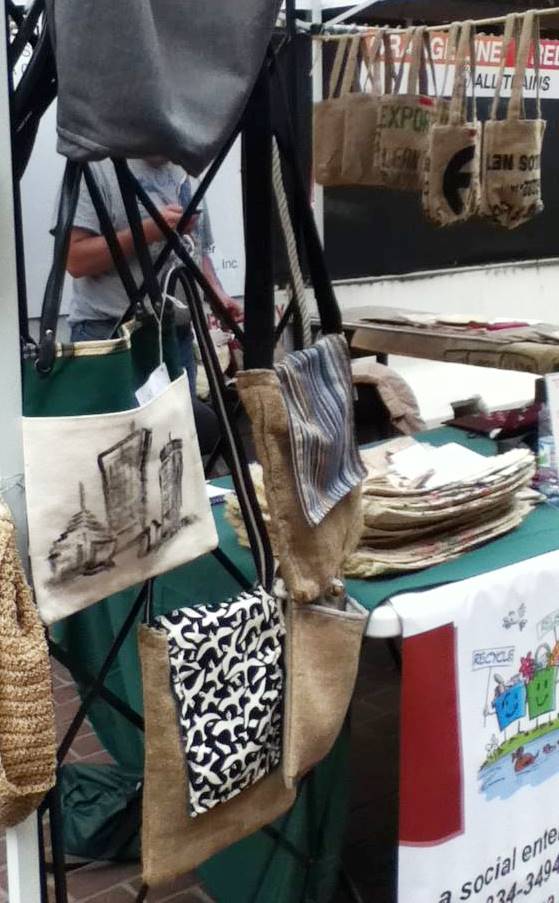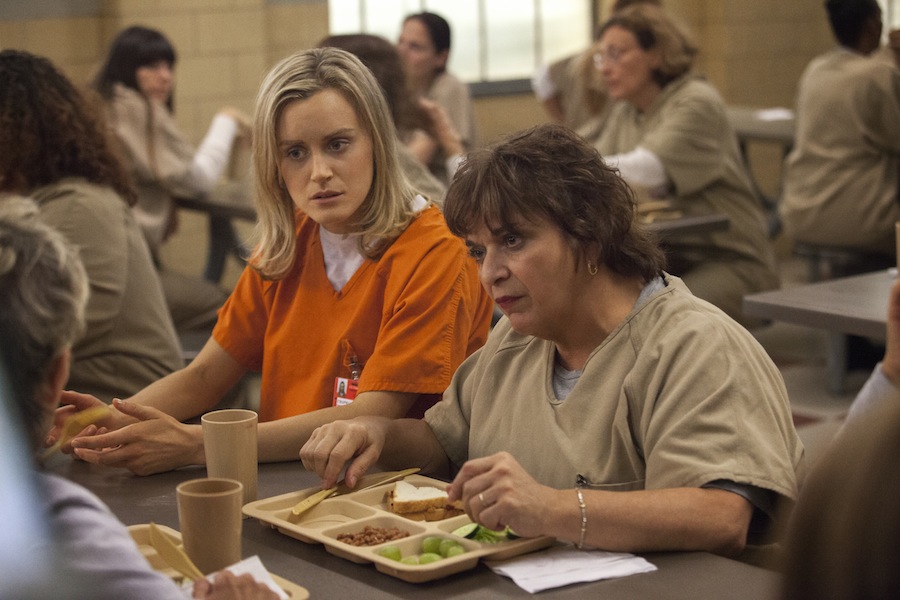It's been all over the papers and many bloggers are tackling the horrendous conditions in California. A prison system that in 2011 was ordered by the Supreme Court to figure out what to do with 30,000 people who because of the system's overcrowding were suffering "cruel and unusual punishment." As Laura Gottesdiener wrote in the Huffington Post , "The state’s 140,000 inmates, jam-packed into 33 prisons only built to hold 80,000 individuals…commit suicide at double the national inmate average, experience unprecedented rates of lock-downs, receive inadequate medical treatment and sometimes live in continuous fear of violence."

image from thebusysignal.com
In early July, the infuriating news broke that between 2006-2010, doctors who were under contract with the California Department of Corrections and Rehabilitation (CDCR) sterilized nearly 150 female inmates without anyone's approval. Corey G. Johnson, writing for The Center for Investigative Reporting wrote that these doctors were paid $147,460 to perform the procedure that "at least 148 women received tubal ligations…during those five years – and there are perhaps 100 more dating back to the late 1990s, according to state documents and interviews."
And it doesn't get better for prisoners, or for that matter, for any of us who care about how we treat those behind bars. California holds nearly 12,000 people in solitary confinement at a cost of over $60 million per year. The prisoners recognize that they have committed crimes but they are suffering under extreme isolation. U.S. News and World Report called these cells "living tombs." I wrote about Massachusetts' current attempts and need to get rid of these dangerous solitary conditions recently online at Boston Magazine.
On one of the best websites about their plight, Prisoner Hunger Strike Solidarity says about California's Secure Housing Unit (SHU), "The cells have no windows, and no access to fresh air or sunlight. The United Nations condemns the use of solitary confinement for more than 15 days as torture, yet many people in California state prisons have been encaged in solitary for 10 to 40 years."
The hunger strike began on July 8th when more than 30,000 prisoners in 15 prisons refused meals. As reported on Democracy Now, as they entered their 13th day, about 2,500 prisoners from across the state were still on indefinite hunger strike, calling for Governor Jerry Brown and the CDCR to meet their demands about the inhumane conditions they are suffering. But as Lois Ahrens of the Real Cost of Prisons Project said in an email, California officials are trying in any way they can to discredit the strike. Brown has not been moved to act. Strikers' lawyers are not being allowed into the prisons. Soon it will be into the third week.
Jules Lobel, president of the Center for Constitutional Rights and lead attorney representing Pelican Bay prisoners in a lawsuit challenging long-term solitary, appeared on Democracy Now. said "If you’re found guilty of murdering somebody in prison, you’re given a definite term, which can be no more than five years in solitary. If you, on the other hand, are simply labeled by some gang investigator as a member of some gang—and that could be done simply because you have artwork or because you have a tattoo or because you have a birthday card from somebody who’s in a gang, anything like that—you then are given an indefinite sentence, which can go on for years and years and years and decades."
This is not the first hunger strike for California. In 2011, over 12,000 prisoners and their family and community members participated in statewide hunger strikes protesting the inhumane conditions in solitary. The core demands for the current strike, one of the largest ever, are below, in their own words from the Prisoner Hunger Strike Solidarity website.
- End Group Punishment & Administrative Abuse
- Abolish the Debriefing Policy, and Modify Active/Inactive Gang Status Criteria -Perceived gang membership is one of the leading reasons for placement in solitary confinement. The practice of “debriefing,” or offering up information about fellow prisoners particularly regarding gang status, is often demanded in return for better food or release from the SHU. Debriefing puts the safety of prisoners and their families at risk, because they are then viewed as “snitches.”
- Comply with the US Commission on Safety and Abuse in America’s Prisons 2006 Recommendations Regarding an End to Long-Term Solitary Confinement – (my note– Why is this not so???)
- Provide Adequate and Nutritious Food –
- Expand and Provide Constructive Programming and Privileges for Indefinite Secure Housing Unit (SHU) Status Inmates.
While this strike rages on, another horrible plague has struck California's prisoners. While Governor Brown has said that California has the greatest health care for prisoners "in the world," San Francisco Bay View reported that over 3,300 prisoners in such facilities as Avenal and Pleasant Valley State Prison are at high risk of infection or death from valley fever. Since 2006, 62 behind bars in California have died from this disease which undoubtedly is related to overcrowding and other unhealthful conditions. And 80% have been African-American, reported the Bay View.
Many have joined rallies and protests and signed petitions– all found at the websites I've mentioned above. However, while we complain of 100 degree heat and take solace in our air conditioned homes, prisoners are suffering — and not just for their crimes.


.png)




